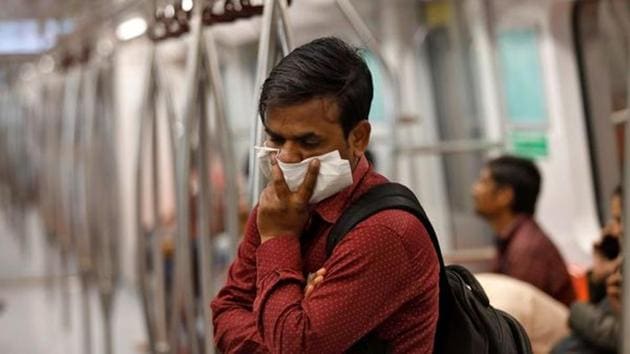Why social distancing is tough to implement
The first problem in implementing social distancing in India could be its population density itself.
New Delhi: The World Health Organization (WHO) has recommended social distancing as a preventive measure against the new coronavirus. Maintaining a distance of one metre from a coughing or sneezing person, the organisation says, will save a person from breathing in the virus. This is a particularly difficult measure to implement in India because of its dense population and poverty, an HT analysis shows.

The first problem in implementing social distancing in India could be its population density itself. India is not only the second most populated country (after China) but also among the most densely populated. Among the top ten most populous countries, India’s population density is behind only Bangladesh’s. About 455 people live within a square kilometre area in India compared to 1,240 in Bangladesh on average, according to data from the World Bank. China, where the Covid-19 outbreak originated, has a population density of only 148.


To be sure, the average population density doesn’t capture the fact that India’s population is concentrated in specific areas. For instance, according to the 2011 Census, India’s population density was 382. While population density in major states such as Delhi, Bihar, West Bengal, Kerala and Uttar Pradesh was over double that number, hilly states such as Uttarakhand, Himachal Pradesh, and the northeastern states (except Tripura and Assam) had less than half that density. (See Map)
These population density figures highlight how closely people might be living in some regions of India. If the density is high in an area, maintaining a distance of one metre in public might be more difficult. For example, the Gandhi Nagar subdistrict of Delhi (the most densely populated state in 2011), had a population density of 89,185 persons per square kilometre. This means that even if Gandhi Nagar was flat ground and no resident had any belongings, a person would have only a square of 3.4 metres available to them.
In a developing country like India, travelling by public transport complicates maintaining social distance. For instance, according to railway statistics compiled by the Centre for Monitoring Indian Economy, most of the people travelling by railways do so by second-class, the cheapest and more crowded class of compartments. Among 10 million people who travelled by non-suburban railways in 2019-20, 84% travelled second class. Similar data for suburban railways, available till 2016-17, shows that more than 90% passengers travelled by second class.
Governments have, therefore, been right in shutting down schools, colleges, theatres, gyms and even nightclubs. This move, apart from limiting interaction in these spaces, also discourages movement outside the household. However, data from the National Family Health Survey (NFHS) conducted in 2015-16 shows that even if people do not go out for work, entertainment, or other reasons, it might not be easy to maintain distance from infected persons or those suspected of having the disease.
The NFHS survey, for example, asked respondents the number of rooms they had for sleeping. HT’s analysis of the data shows that a majority (58%) lived in households where at least one sleeping room would have to be used by more than two people and one-third lived in households where at least one sleeping room would have to be used by more than three people. If a person in such crowded households is suspected of having the disease, getting quarantined at home may not also be a safe option.
Further, a class-wise analysis shows that poorer households could be more affected by this problem. Among the people living in the poorest 20% households, 68% lived in households where at least one sleeping room would have to be used by more than two people. This figure is 40% among people living in the richest 20% households. (See chart)
Moreover, some households also share toilets and drinking water facilities. According to the NFHS survey, nearly half of India’s population (48%) lived in households that had their source of drinking water beyond the boundaries of their house. Among those who used a toilet facility back then (around 60% of the population), 15% of people lived in households that shared their toilet facility with other households. The exact share of such a population might have changed with a renewed focus on water and sanitation under the Narendra Modi government. However, with a population as large as that of India, even a small percentage of persons sharing toilets or drinking water facilities might translate into millions of people.






